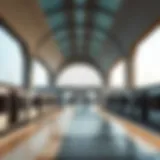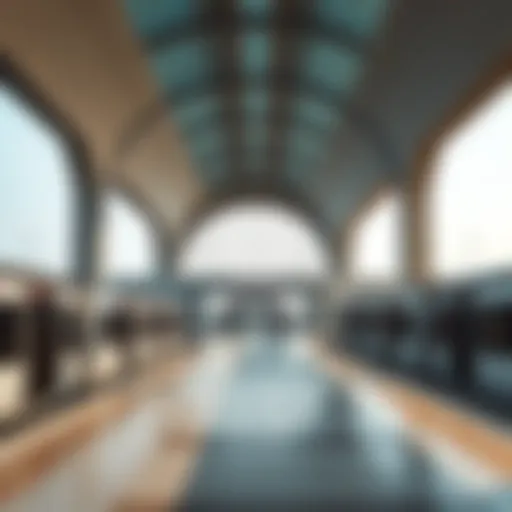Eid Holiday Celebrations in the UAE: Insights for 2024
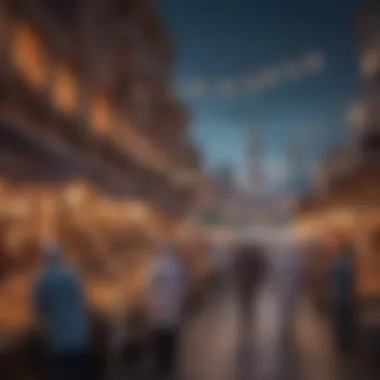

Intro
Eid celebrations in the United Arab Emirates hold a distinct cultural significance that transcends mere festivities. These annual celebrations are steeped in rich traditions, act as a unifying force within diverse communities, and provide a vital economic boost, particularly in sectors like real estate. As 2024 approaches, keen eyes are set on the upcoming Eid festivities and their unique influences.
From the vibrant streets of Dubai adorned with lights to the dazzling fireworks illuminating the sky, the sights and sounds of Eid resonate deeply with both locals and visitors. This year, there’s a palpable excitement that stems not only from the customary religious observances but also from the evolving socio-economic landscape that characterizes the UAE. As traditional practices blend with modern influences, the celebrations reveal much about the culture, unity, and aspirations of the Emirati people.
As we dive into the various facets of Eid in the UAE for 2024, it becomes clear that understanding the cultural nuances and economic implications can greatly benefit individuals considering real estate investments. The upcoming sections will dissect important insights into the market trends, highlight investment opportunities, and shed light on how Eid shapes community dynamics and economic growth in the UAE.
Understanding Eid in the UAE
Eid is not merely a holiday in the United Arab Emirates; it's a vibrant tapestry woven from the threads of history, culture, and social life. As we dive into this festive celebration, it’s essential to understand its significance beyond the rituals and festivities. For investors, real estate agents, and industry professionals, grasping the essence of Eid provides a clearer view of the dynamics affecting market trends and consumer behaviors during this period.
Eid in the UAE encapsulates a wealth of traditions rooted deep within the cultural landscape. It’s a time when families gather, communities unite, and even the economy feels a palpable shift. For those engaged in the real estate sector, understanding the gravity of this celebration can illuminate buyer sentiment and signify potential opportunities.
Historical Significance of Eid
Diving into the past, Eid reminds us of its profound historical importance that dates back centuries. The holiday primarily marks the end of Ramadan, a month dedicated to fasting, reflection, and community. Although the tales of Eid's history can be found across many cultures, in the UAE, it takes on a distinct character shaped by Bedouin traditions and Islamic values.
The roots of Eid stretch into the essence of gratitude, gratitude for health, family, and the community. Many Emiratis emphasize the timeless adage, "the more, the merrier," showcasing how collective celebrations reflect unity within the family and society. Each year, this echo of togetherness resonates stronger amid the opulence found in places like Dubai and Abu Dhabi, where modernity meets tradition.
Additionally, the government’s embrace of Eid as a national holiday showcases its importance in fostering national identity. It’s also a pivot point for economic activities, as many businesses gear their marketing strategies around this festive time, hoping to capitalize on the consumer spirit that Eid inspires. This can be particularly significant for stakeholders in the retail and hospitality sectors, indicating a fruitful season ahead.
Cultural Practices During Eid
When discussing cultural practices during Eid in the UAE, one cannot overlook the colorful rituals that bring alive the essence of the celebration. From the early morning prayers at the mosque to the lavish family meals, the observance reflects a delightful blend of tradition and modernity.
Noteworthy practices include:
- Prayer Gatherings: Traditionally, the day begins with a special prayer, known as Eid al-Fitr prayer, drawing crowds to mosques and open fields alike. It is a moment of shared spirituality and connection with the community.
- Feasting and Food: Food is at the heart of Eid. Families prepare lavish meals with dishes like machboos and hummus. The joy of sharing meals emphasizes the values of hospitality and generosity.
- Gift Giving: Another defining feature is the exchange of Eidiya, which are gifts usually given to children. This practice can also extend to adults, further enhancing the bonds within families and relationships.
Moreover, cultural practices also evolve with time. As younger generations embrace technology, social media has become an avenue for sharing Eid moments, bringing families together even when apart. Digital platforms are filled with Eid greetings, and many people opt for virtual meetings to celebrate with loved ones worldwide.
In summary, Eid is not just an annual holiday; it signifies a powerful mix of historical significance and evolving cultural practices that deeply affect social norms, economic behaviors, and community identity in the UAE. Understanding these layers can aid various stakeholders as they navigate this transformative period in the real estate landscape.
Eid Celebration Dates in
Knowing the dates of Eid is crucial for anyone involved in planning, investment, or celebrations within the UAE. Being a country where religious observances blend with economic activities, these dates directly influence many sectors, especially real estate and retail. If you are an investor, developer, or agent, understanding the timing around Eid can offer a distinct advantage in identifying peak times for property viewings, retail promotions, and engaging with potential clients.
Expected Holiday Schedule
In 2024, Eid al-Fitr is anticipated to be observed around mid-April, with official announcements to confirm this closer to the date. The exact timing hinges on the moon sighting, a practice steeped in tradition and religious significance in the Muslim community. Historically, Eid celebrations commence on the first day after Ramadan's conclusion. Given that Ramadan lasts either 29 or 30 days, the holiday schedule may fall either on April 10 or April 11, depending on this lunar observation.
The UAE government typically declares a public holiday for a duration of three days, allowing families to congregate and partake in customs. This period is marked by heightened activity in retail sectors, as shops often launch special sales and promotions targeting families preparing for festivities.
Variable Dates Based on Lunar Calendar
The lunar calendar plays a pivotal role in determining the festival dates. Unlike the Gregorian calendar, which is fixed, the Islamic calendar follows the moon phases. As a result, Missng even a day could mean a shift in observance, confusing the best-laid plans. This intrinsic uncertainty necessitates flexibility for real estate professionals and investors.
To navigate these variations, it is wise to stay attuned to local community announcements and social media feeds for updates on moon sightings. Tools such as calendar apps that track lunar cycles can also prove beneficial in planning activities surrounding Eid. Listed below are essential factors to consider regarding the impact of lunar cycles:
- Flexibility: Being able to adjust schedules and marketing plans can enhance client relations and sales opportunities.
- Cultural Sensitivity: Understanding this aspect is vital for engaging with clients who place high importance on religious observances.
- Community Engagement: Leveraging local customs and traditions during this time can build rapport with potential buyers and sellers alike.
"Eid provides an opportunity for businesses to showcase their commitment to understanding and respecting cultural practices, potentially leading to long-term loyalty from clients."
Overall, recognizing the significance of Eid celebration dates and their implications not only enhances understanding but also proves essential for strategically aligning business activities and personal engagements during this important time in the UAE.
Social Aspects of Eid Festivities
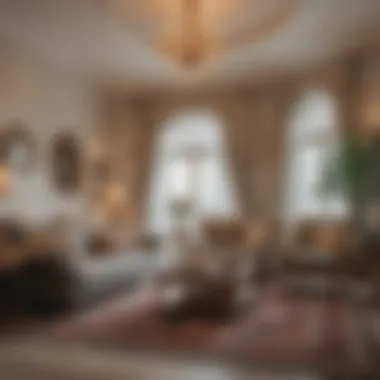

Eid is more than just a holiday; it’s a vibrant tapestry woven from the threads of tradition, culture, and community. The social aspects of Eid celebrations in the UAE serve as a critical element in understanding how this festivity impacts various domains, especially for those in the real estate sector. Family gatherings, the spirit of giving, and community involvement are not just practices; they’re pivotal to the UAE’s cultural identity and social fabric.
Family Gatherings and Traditions
Family has always been at the heart of Eid celebrations. Every year, families in the UAE come together to honor their shared heritage. This gathering can often be characterized as a fusion of the old and the new, where traditional values are celebrated within a modern context.
Arab hospitality shines during these gatherings. Meals are often lavish, with dishes like lamb ouzi and maamoul shared among family members, creating a sense of unity and belonging. As families gather, the atmosphere fills with joy and laughter, amplifying the joy that Eid brings. Furthermore, children relish receiving Eidiyah, a monetary gift given during this time, fostering a sense of excitement and anticipation.
From a property market standpoint, this annual family tradition often leads to increased demand for larger homes suitable for hosting gatherings. It becomes clear that the cultural practice of familial connection drives not only social bonds but also economic activity within the real estate sector, since larger living spaces become more desirable during this festive period.
Community Involvement and Charity
Eid is synonymous with giving. The act of helping others, especially those in need, is not just a moral obligation but a cornerstone of Eid celebrations. During this time, it’s customary for individuals and families to participate in charitable activities, helping to uplift the less fortunate. Various organizations ramp up their efforts to distribute food, clothing, and monetary aid, ensuring that everyone partakes in the festive spirit.
The UAE’s culture is deeply rooted in Zakat, the practice of charitable giving. Many make it a point to fulfill their Zakat al-Fitr—a charity given to the poor before the Eid prayer—fostering a sense of community and shared responsibility. This involvement promotes social equity, ensuring that the festivities include all segments of society.
For real estate investors and agents, this charitable spirit offers an opportunity to engage with the community. Properties that emphasize community involvement or exhibit support for local charitable organizations will likely attract positive attention. The dynamic of social responsibility can become a contributing factor for buyers looking for homes, creating a market trend that values social ethics as much as it does financial investment.
In summary, the social aspects of Eid celebrations go beyond tradition; they establish a sense of community, inclusivity, and market dynamics that are pivotal in understanding the UAE’s cultural landscape.
By recognizing the importance of family and community during Eid, stakeholders can adapt their approaches in the real estate sector, ensuring they resonate with the values of their target audience.
Economic Implications of Eid
Eid is not just a festive time filled with joy and gathering; it also plays a crucial role in the UAE's economy. The economic fallout from Eid affects multiple sectors, particularly retail and tourism. These sectors experience a boom in activity, translating into revenue generation and opportunities for growth. Understanding this economic implication helps investors, developers, and stakeholders make informed decisions during this period.
Impact on Retail and Markets
Retailers in the UAE look forward to Eid with a kind of anticipation that can be compared to waiting for rain in a desert. This is a prime time for sales and promotions, as people are predisposed to spend generously. Special sales events are often tied with the holiday, giving consumers incentives to purchase.
- Increased Foot Traffic: Malls and markets become bustling hubs as families and friends come together. This increase in foot traffic directly correlates to higher sales volumes.
- Seasonal Products: Retailers often stock seasonal products like new clothing, gifts, and sweet treats that specifically cater to Eid's cultural practices. For example, traditional attire such as abayas and kanduras see major spikes in demand.
- Online Shopping Boom: There’s a notable rise in online shopping as well. Many consumers prefer the convenience of purchasing festive goods online, especially in a tech-savvy society like the UAE. E-commerce platforms flood with deals, attracting a significant number of buyers.
Eid sales have become a significant marker of economic activity, influencing business forecasting and inventory decisions for many retailers. The cumulative effect generates a lively atmosphere not just during the holiday itself but also fosters a sense of community and shared experience among participants.
Travel and Tourism Activities
Travel and tourism also thrive during Eid, as numerous expats take advantage of the holiday to travel home or explore new destinations. In a multicultural city like Dubai, this period witnesses a surge in both inbound and outbound travel.
- Increased Bookings: Airlines often report a spike in ticket sales around Eid. Many people purchase flights to visit family, while tourists from other regions flock to the UAE to experience the unique festivities.
- Hotel Demand: accommodation sectors benefit greatly. Many visitors want to experience the local traditions, leading to increased occupancy rates in hotels. Major hotels offer special Eid packages that combine cultural experiences with luxury stays.
- Cultural Festivals: Various cultural festivals, including food fairs and local art exhibitions, attract tourists and locals alike. These events play a pivotal role in driving tourism-related revenue during during Eid.
"Eid is not just a celebration; it's also an economic engine fueling various sectors, enhancing the vibrancy of the UAE's marketplace."
In summary, the economic implications of Eid celebrations sway numerous sectors within the UAE, making it an essential aspect for stakeholders to consider. Understanding how these dynamics work can lead to better strategies in positions ranging from retail planning to investment decisions. The blend of tradition with modern commercialism during this holiday increases economic activity, driving growth for businesses, and enriching the overall community experience.
Eid in the Real Estate Context
Delving into the real estate context during Eid provides a unique lens on how this festive time influences market dynamics. Eid al-Fitr, marking the end of Ramadan, isn't just a religious observance; it holds significant weight in the real estate sector, as festivities bring with them actions and sentiments that can sway buyer behaviors and investment trends. Each year, the period surrounding Eid transforms not just lifestyles but also the landscape of property transactions.
Buyer Sentiment During the Holiday
During Eid, buyer sentiment tends to shift noticeably. Emotions run high as families gather, fostering a renewed appreciation for home and community. This makes potential buyers more inclined to consider purchasing properties, often with a focus on family-oriented spaces like villas or apartments in community developments.
Some key aspects of buyer sentiment during Eid include:
- Family Focus: The desire to accommodate family members who come to celebrate often pushes buyers to seek larger homes or proximity to loved ones.
- Cultural Significance: Investing during this time can carry cultural weight, as buying a home may symbolize prosperity and stability after fasting and reflection.
- Heightened Activity: Real estate agents note an uptick in inquiries and viewings, as potential buyers are motivated by the festive mood.
Real estate professionals must be attuned to these changing sentiments. As many look to celebrate in new spaces, successful agents tailor their strategies to align with the uplifting environment of Eid, often marketing properties as the perfect setting for future family gatherings.
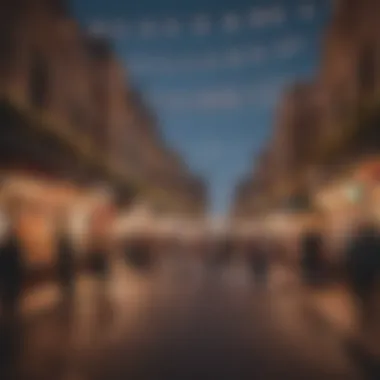

Investment Opportunities in Holiday Season
The holiday season of Eid not only spurs buyer sentiment but also opens up a trove of investment opportunities. Developers keen on capitalizing on this period have the chance to engage heavy with events and promotions that attract potential buyers and investors alike. Here are some insights into the investment landscape around Eid:
- Increased Marketing Push: Developers often launch campaigns targeting the festive crowd, showcasing new listings or discounts to encourage purchases.
- Short-term Rentals: Many might look towards short-term rental investments, especially in tourist-friendly areas. As families and friends gather, the demand for accommodations rises, making this a lucrative option for investors.
- Commercial Spaces: With the surge in gatherings, restaurants and event spaces often see a boom and hence demonstrate potential for growth.
The essence of Eid brings a renewal in hope and aspiration, and for investors, understanding the pulses of this season could translate into lucrative opportunities. A keen eye on market trends during this festive time can ultimately yield benefits, making Eid a pivotal period for engagement in the real estate market.
"Eid not only signifies spiritual renewal but also presents great opportunities for real estate development and investment in the region."
Overall, recognizing how Eid influences the sentiments and behaviors of buyers can assist in navigating the intricate pathways of the real estate market during this vibrant time.
Eid Celebrations and Property Trends
The intersection of Eid celebrations and property trends in the UAE provides a fascinating lens through which to view the shifting dynamics of the real estate market. For investors and industry professionals, understanding how the festivities impact housing demand is crucial. The celebratory nature of Eid often generates a surge in community engagement and, subsequently, an uptick in real estate activity. During this festive season, families might be drawn to explore better living arrangements, whether that means upgrading to larger homes for accommodating gatherings or seeking properties that align with the enhanced lifestyle many aim to embrace during this time.
These trends result in unique considerations for both buyers and sellers alike. The presence of Eid as a cultural touchstone creates a period where market sentiment shifts, often favoring properties that are perceived as ideal for hosting family gatherings or community celebrations.
Influence of Festivities on Housing Demand
Festivities like Eid can significantly influence housing demand in the UAE. The joyous atmosphere encourages families to revisit their housing needs, often leading them to consider new options that better fit their festive requirements. Historically, this time of year witnesses an influx in property viewings, with many households prioritizing locations that are conducive to family gatherings and celebrations.
Real estate agents report a noticeable increase in interest for villas and larger apartments as families seek space to host relatives and friends. It is not just about physical space; geographic location matters too. Properties near mosques and community centers tend to be more desirable during Eid, as they facilitate communal participation in prayers and other festivities.
Additionally, prospective buyers often look towards neighborhoods known for their vibrant Eid celebrations. They might seek regions with cultural amenities that enhance their celebration experience, reflecting an increased willingness to invest in places that embody festive liveliness.
Market Analysis Before and After Eid
Analyzing the market before and after Eid offers a valuable perspective on investment opportunities. In the weeks leading up to the holiday, real estate activity tends to accelerate. Sellers often present attractive offers, hoping to capitalize on the festive mood. This period sees many properties listed with incentives, leading to a strategic window for buyers looking for favorable deals.
Post-Eid, however, the market can display a different character. Many families who moved or upgraded during the festivities may choose to settle in, leading to a brief lull in new transactions as they enjoy their new properties. This can create an advantageous time for investors seeking to acquire properties that are still comparatively low in demand, especially if market patterns from prior years indicate a possible rebound.
In summary, the cyclical nature of Eid celebrations effects tangible shifts in housing demand. While joyous occasions herald new opportunities, they also encourage prudent market observations and strategic planning for anyone involved in the real estate sector. Understanding these dynamics can lead to sound investment decisions and a deeper comprehension of how traditional celebrations influence modern economic landscapes.
Modern Changes in Eid Celebrations
The landscape of Eid celebrations in the UAE has been shifting noticeably, steering away from the traditional towards a more contemporary approach. These changes reflect a broader evolution in how cultural practices are interpreted and celebrated, especially among younger generations who grow up in a digitally connected world. This section discusses the importance of recognizing modern changes in Eid celebrations, highlighting elements such as technology's role, as well as a noticeable shift in how families engage with traditions.
Eid in the Digital Age
In 2024, technology permeates every aspect of life, and Eid celebrations are no exception. Social media platforms like Instagram and Facebook become virtual venues where families share their festive experiences, showcasing their homes adorned with lights and traditional decorations. E-cards filled with heartfelt messages also replace the traditional practice of sending physical cards, making it easier for people to connect across distances. These digital platforms provide a space for individuals, especially expatriates, to maintain cultural connections while being far from their homeland.
Even local businesses are leveraging technology to enhance the holiday spirit. Online marketplaces flourish during this time, offering special promotions that cater specifically to Eid shoppers, from traditional attire to gourmet treats. The convenience of purchasing gifts and groceries online not only meets the demands of modern life but also reflects changing consumer behaviors.
"In today’s world, technology isn’t just a tool; it’s a vehicle for communities to share and celebrate their lives, especially during significant occasions like Eid."
Shifts in Traditional Practices
While the essence of Eid—reflection, gratitude, and togetherness—remains steadfast, certain traditional practices have undergone modification. For instance, the act of family gatherings has become more inclusive, accommodating extended families and friends through virtual platforms when necessary. Video calls allow loved ones around the world to join together in prayer and celebration, thereby preserving the communal spirit of Eid.
Moreover, cultural practices such as the offering of zakat, or alms, have also adapted to modern sensibilities. Instead of merely giving cash, many choose to donate through established online charitable platforms that ensure transparency and efficiency. This aligns perfectly with the customs of giving back to the community and can even bolster outreach efforts, allowing for generous contributions to reach those in need faster.
As consumption patterns shift, so does the cuisine prepared for Eid feasts. Traditional dishes still hold their place, but people are more willing to experiment with fusion dishes or even global cuisines, reflecting the diverse melting pot of cultures in the UAE.
In conclusion, these modern changes in Eid celebrations not only adapt to today's rapid pace but also serve to strengthen cultural ties in a globalized world. Be it through technology or evolving practices, these adaptations herald a more inclusive and accessible Eid celebration that resonates with the realities of contemporary life.
A Comparative Look at Eid Across Regions
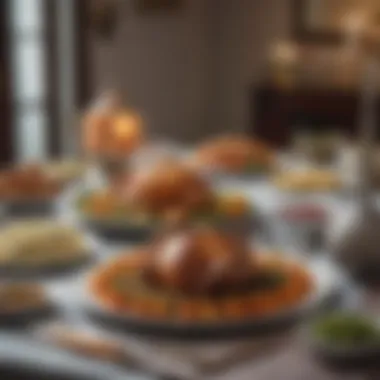

Understanding how Eid is celebrated across different regions is crucial for a comprehensive grasp of its social and cultural significance. It not only enriches our appreciation of the holiday but also highlights diverse practices that reflect local customs, beliefs, and values. In the UAE, Eid acts as a unifying thread that binds various cultures, yet it also showcases unique regional flavors that distinguish the celebrations.
Eid Traditions in the Gulf Cooperation Council
When we take a closer look at the countries within the Gulf Cooperation Council (GCC), we find that although they share many similarities in how they observe Eid, there are also interesting nuances. For instance:
- Saudi Arabia: The birthplace of Islam, the country goes all out with massive public celebrations. Streets and mosques are adorned with lights and decorations, while special prayers are attended by millions.
- Kuwait: Traditional dishes such as 'hamour' fish and 'quwarma' lamb are staples on Eid tables. Family gatherings are filled with warmth, laughter, and a sumptuous feast.
- Bahrain: Known for its vibrant street parades and musical performances, Bahrain blends modern entertainment with spiritual observances. Each family takes part in age-old customs while also welcoming contemporary influences.
These distinct practices create a dynamic picture of Eid within the GCC region. It's a blend of cultural heritage and modernity that enhances communal spirit.
Eid Practices Beyond the UAE
Moving outward from the Gulf, Eid traditions shift yet again as we cross borders into regions with their own unique histories and cultural influences.
- North Africa: Here, you'll find countries like Morocco and Algeria celebrating Eid with distinct culinary delights. Traditional pastries like 'kaab el ghazal' in Morocco and 'makroud' in Algeria are prepared to welcome the holiday.
- South Asia: In places like Pakistan and India, Eid brings a colorful burst of festivities characterized by vibrant bazaars, elaborate henna designs, and the practice of 'Zakat' or charity. Communities come together to enjoy special meals known as 'biryani' and 'kebabs', often leading to large community feasts.
- Southeast Asia: Indonesia and Malaysia are particularly noteworthy with their unique twists on Eid. The celebration, known as 'Lebaran', includes vibrant local customs such as 'open houses', where families invite friends and neighbors to share food and festivities.
"Eid transcends borders, weaving a rich tapestry of traditions and customs that vary significantly, yet reflect unity in diversity."
In summary, a comparative approach to Eid celebrations reveals not only the shared joy of the holiday but also a potpourri of cultural interpretations. For stakeholders in real estate and investment landscapes, understanding these traditions can provide insight into consumer behavior during this festive period, highlighting opportunities that align with these customs.
Future Trends Related to Eid Celebrations
The future of Eid celebrations in the UAE is an intriguing topic for anyone keen to understand how tradition and modernity intersect. As society evolves, so do the ways in which people observe this festive period. Exploring future trends is crucial not only for cultural preservation but also for strategic planning in sectors like real estate and tourism, where shifts in consumer behavior can yield significant implications.
Predictions for Future Eid Celebrations
As we look to the future, one can expect several noteworthy trends to emerge in the way Eid is celebrated:
- Hybrid Celebrations: With the lessons learned from the COVID-19 pandemic, many families may choose a hybrid model combining physical gatherings and virtual interactions. This allows those who are far away or unable to travel to still partake in the festivities.
- Environmentally Friendly Practices: There’s a growing consciousness around sustainability. Festivities in the future may focus more on eco-friendly options, such as using digital invitations instead of paper, or celebrating in ways that minimize waste.
- Authentic Culinary Experiences: As food remains a cornerstone of Eid celebrations, more people might be inclined to explore authentic recipes. They may purchase traditional ingredients online, supporting local businesses. This trend could invigorate local cuisine and foster a sense of pride in cultural heritage.
The significance here extends beyond mere predictions. By understanding these shifts, stakeholders in the real estate sector can better cater to families seeking homes that accommodate both traditional gatherings and modern conveniences.
The Role of Technology in Future Celebrations
Technology has already begun to reshape how Eid is celebrated, and this influence is expected to grow:
- Digital Gifting: Digital platforms may expand to include personalized e-gifts, making it easier for families and friends to share the spirit of Eid, regardless of geographic barriers.
- Social Media Campaigns: Eid will likely see enhanced engagement via social media. Families may share their experiences, recipes, and traditions, bringing these customs into the global spotlight and creating a sense of community online.
- Virtual Reality Gatherings: With the advent of virtual reality, people could virtually attend Eid prayers and events, bridging distances and enabling participation without the need for travel. Imagine putting on a VR headset to feel you are right there in the midst of a bustling Eid gathering.
Ultimately, the crux of these technological advancements lies in how they can transform interactions and experiences during Eid. This impact emphasizes the need for real estate investors and developers to consider tech-savvy solutions that cater to the evolving preferences of future homebuyers and tenants.
"As social dynamics shift, so too must our approach to hosting and celebrating important occasions like Eid, blending the old with the new."
In summary, the future trends in Eid celebrations offer a window into how cultural practices are adapting. Whether through sustainable approaches, technological integration, or hybrid models, understanding these changes is vital for investors and the broader community. Keeping an eye on these trends ensures that all stakeholders can participate meaningfully in the evolving tapestry of Eid.
Epilogue: The Importance of Eid in UAE Society
Eid in the UAE is more than just a holiday; it encapsulates the essence of the nation’s rich cultural tapestry. As we delve into the significance of this occasion, various facets emerge that solidify its importance within UAE society and beyond. The celebrations are a vibrant blend of traditional values and modern practices, reflecting a unique identity shaped over time.
One of the key elements of Eid is how it connects people across generations. Families gather, rekindling ties that may sometimes wane in the hustle of daily life. This reunion fosters a sense of belonging, making it clear that family remains at the heart of Emirati culture. With streets buzzing with joy and homes adorned with lights, the atmosphere during Eid is tangible—an experience melding joy, nostalgia, and unity.
Reflections on Cultural Heritage and Modernity
Eid celebrations are deeply rooted in Islamic tradition, yet the modern era has ushered in a remarkable evolution of these customs. In the UAE, as new generations rise, there’s a conscious effort to retain the rich cultural heritage while integrating contemporary practices. Online greetings via social media platforms like Facebook and Instagram have emerged as a modern substitute for traditional greeting cards, showcasing a fusion of old and new.
Moreover, local Emirati markets, where traditional goods are sold, seem to thrive during this festive period. Items like dates, perfumes, and Arabic sweets become hot commodities as families prepare for the holiday. This not only preserves cultural practices but also stimulates local economies, making Eid a significant financial occasion as well. The celebrations reflect a dance between the age-old and the emerging, creating a unique tapestry of experiences for Emiratis and residents alike.
Eid as a Benchmark for Community Cohesion
Eid serves as a benchmark of sorts for community cohesion in the UAE. Traditionally, this holiday has been a time to bridge divides—between neighbors, friends, and even strangers. It is common to see families invite those who may not have family nearby, embodying the spirit of hospitality that is a hallmark of Emirati culture. This openheartedness fosters a sense of unity, driving home the message that community matters.
The charitable aspects of Eid also cannot be overlooked. Many families allocate part of their Eid celebrations towards helping those less fortunate, through donations or community services. This act of giving strengthens bonds and creates a ripple effect of goodwill. In this light, Eid becomes not just a personal celebration but a shared experience that draws communities closer, reminding everyone of their shared humanity and collective responsibilities.
In summary, Eid in the UAE stands as a pillar of cultural identity and community spirit. Its importance transcends mere celebration, acting as a catalyst for unity, continuity, and resilience within society. Being aware of these dynamics is essential for investors, agents, and developers. Understanding the societal nuances surrounding Eid can guide their approaches, especially in industries that respond to the rhythmic patterns of community life.


